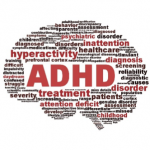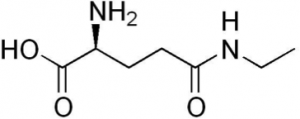
Attention Deficit/Hyperactivity Disorder (ADHD) is one of the most common neurodevelopmental disorders among children—many of whom have trouble paying attention, controlling impulsive behaviors, or being overly active (1).
It is estimated that 5% of US children have ADHD, with 6.1 million in 2016 (2).
The rise of ADHD in young children ages 2-5 is particularly alarming, as rates more than doubled from 2007 to 2012 (2).
Oftentimes, ADHD occurs with other disorders and conditions, such as depression, autism spectrum disorder, and Tourette Syndrome. In 2016 alone, 75% US children with ADHD had at least one other mental, emotional, or behavioral disorder (2).
Causes of ADHD
The cause(s) and risk factors for ADHD are unknown, despite the common, yet inaccurate, belief that ADHD is caused by consuming too much sugar, watching too much television, parenting, or social and environmental factors. However, there is strong enough evidence to show that genetics plays an important role. Other possible causes and risk factors include brain injury, alcohol and tobacco use during pregnancy, premature delivery, and low birth weight (1).
Signs and symptoms
Although most children typically have trouble focusing, children with ADHD have trouble outgrowing such behaviors (1).
A child with ADHD might:
- daydream a lot
- forget or lose things a lot
- squirm or fidget
- talk too much
- make careless mistakes or take unnecessary risks
- have a hard time resisting temptation
- have trouble taking turns
- have difficulty getting along with others (1)

Treatment for ADHD
Treatment for ADHD can include behavior therapy and/or medication. For children 6 years of age and older, the American Academy of Pediatrics recommends both behavior therapy and medication. For younger children under the age of 6 with ADHD, behavior therapy is recommended as the first line of treatment, before medication is introduced (2).
However, every child is unique and may take to a particular treatment differently. With that being said, it is important that treatments are closely monitored (1).
What about L-theanine?
L-theanine is a water-soluble amino acid known to promote a “relaxed, yet alert, feeling at rest” (3). Aside from its ability to reduce stress, anxiety, and blood pressure, L-theanine may also be effective in the treatment of ADHD.
Evidence-based research has shown a variety of benefits from taking L-theanine. It has been shown to have a calming effect when people are under physical and psychological stress, enhance attentional capacity and mental clarity, and improve overall cognitive performance. It has also been found to improve simple reaction time, speed of numeric working memory, word recognition, and accuracy of sentence verification.

A 2011 randomized controlled clinical trial investigated the efficacy and safety of L-theanine as an aid to improving sleep quality among 98 boys, ages 8-12, who have been formally diagnosed with ADHD. Participants consumed two chewable tablets of L-theanine twice daily, totaling 400 mg/day for six weeks. After collecting and analyzing the data, the authors concluded that 400 mg/day of L-theanine is safe and effective in improving some aspects of sleep quality in boys diagnosed with ADHD (4).
Managing ADHD
Although being healthy is important for all children, it is particularly important for children with ADHD. Having a healthy lifestyle can help children deal with symptoms relating to ADHD. According to the Centers for Disease Control and Prevention, healthy behaviors for children with ADHD include:
- Eating a healthful diet centered on fruits, vegetables, whole grains, legumes, lean protein sources, and nuts and seeds
- Participating in physical activity for at least 60 minutes each day
- Limiting screen time from TVs, computers, phones, etc.
- Getting the recommended amount of sleep each night based on age (1)
References
(1) Attention-Deficit/Hyperactivity Disorder (ADHD): General Information. Centers for Disease Control and Prevention. https://www.cdc.gov/ncbddd/adhd/facts.html. Updated May 31, 2017. Accessed June 22, 2018.
(2) Attention-Deficit/Hyperactivity Disorder (ADHD): Data & Statistics. Centers for Disease Control and Prevention. https://www.cdc.gov/ncbddd/adhd/data.html. Updated March 20, 2018. Accessed June 22, 2018.
(3) Owen GN, Parnell H, De Bruin EA, and Rycroft JA. The combined effects of L-theanine and caffeine on cognitive performance and mood. Nutritional Neuroscience. 2008; 11(4), 193-198.
(4) Lyon MR. The effects of L-theanine (Suntheanine®) on objective sleep quality in boys with attention deficit hyperactivity disorder (ADHD): A randomized, double-blind, placebo-controlled clinical trial. Alternative medicine review. 2011; 16: 348-354.
Barrett JR, Tracy DK, Giaroli G. To Sleep or Not To Sleep: A Systematic Review of the Literature of Pharmacological Treatments of Insomnia in Children and Adolescents with Attention-Deficit/Hyperactivity Disorder. Journal of Child and Adolescent Psychopharmacology. 2013; 23(10) :640-647.
Giesbrecht T, Rycroft JA, Rowson MJ, De Bruin EA. The combination of L-theanine and caffeine improves cognitive performance and increases subjective alertness. Nutritional Neuroscience. 2010; 13(6), 283-290.
Millichap JG, Yee MM. The Diet Factor in Attention-Deficit/Hyperactivity Disorder. Pediatrics. 2012; 129(2): 330-337
Rucklidge JJ, Frampton CM, Gorman B, Boggis A. Vitamin–mineral treatment of attention-deficit hyperactivity disorder in adults: double-blind randomised placebo-controlled trial. British Journal of Psychiatry. 2014; 204(4): 306-315.
Written by Nicole Lindel, MS in Nutrition Education from Columbia University
